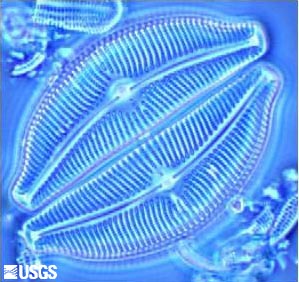- Home
- About S&T
- Taxa/Organisms
- Ecosystems
- Issues
- Methods & Tools
- Reports & Publications
- Location
- Search
2008 | Publisher: Other (RSC Publishing, Journal of Environmental Monitoring) | Format: URL
www.rsc.org — Environmental contaminant and biomarker monitoring data from major U.S. river basins were summarized for black bass (Micropterus spp.) and common carp (Cyprinus carpio) sampled over a nine year period. Cumulative frequency distributions revealed taxon differences for many organochlorine residue concentrations, elemental contaminant concentrations, More...

2008 | Publisher: USGS | Format: URL
pubs.usgs.gov — This study determined that concentrations of persistent hydrophobic contaminants, such as polycyclic aromatic hydrocarbons (< picograms per liter), legacy pesticides (<10 picograms per liter), and polychlorinated biphenyls (<280 picograms per liter) were low and indicative of a largely agricultural area. Atrazine and simazine were the most More...

Publisher: USGS | Science Center: Western Fisheries Research Center (WFRC, Seattle) | Format: URL
wfrc.usgs.gov — This project addresses the occurrence of metal and organochlorine contaminant residues in commercial feeds purchased by the U.S. Fish and Wildlife Service (FWS) hatcheries. Research into fish feed quality could benefit all hatchery and aquaculture operations and assist in the interpretation of the effects of pollution on wild fish. Results from More...

Publisher: USGS | Science Center: Western Fisheries Research Center (WFRC, Seattle) | Format: URL
wfrc.usgs.gov — Mercury contamination from historic gold mining operations is widespread in many rivers, lakes, and reservoirs on the western slopes of the Sierra Nevada. A multidisciplinary investigation by USGS is attempting to better understand mercury dynamics and to identify hot spots within Camp Far West Reservoir in order to determine if remediation More...

Publisher: Other (ScienceDirect (Elsevier)) | Format: URL
tinyurl.com — Organochlorine pesticide and total polychlorinated biphenyl (PCB) concentrations were measured in largemouth bass from the Tombigbee River near a former DDT manufacturing facility at McIntosh, Alabama. Concentrations of DDT isomers in McIntosh bass remained unchanged from 1974 to 2004 and were four times greater than contemporary concentrations More...

Publisher: USGS | Science Center: Western Fisheries Research Center (WFRC, Seattle) | Format: URL
wfrc.usgs.gov — Lake Natoma, an 8,760 acre-feet reservoir on the American River, is managed by the U.S. Bureau of Reclamation (USBR) for multiple uses that include fishing and other water-based recreation. Preliminary results from 22 fish samples collected in Lake Natoma during August 2000 indicate that the mercury content may approach or exceed guidelines for More...

Publisher: USGS | Science Center: Western Fisheries Research Center (WFRC, Seattle) | Format: URL
wfrc.usgs.gov — Artificially maintained water levels within the lake and stresses placed upon the aquifer by well withdrawals facilitate movement of water from the lake into the local ground water system, potentially allowing contaminants to enter the aquifer from the lake. This raises national concern because similar lakeside settings exist throughout the United More...

Publisher: Other (Springer (Netherlands)) | Format: URL
tinyurl.com — Organochlorine chemical residues and elemental concentrations were measured in piscivorous and benthivorous fish at 111 sites from large U.S. river basins. Potential contaminant sources such as urban and agricultural runoff, industrial discharges, mine drainage, and irrigation varied among the sampling sites. Our objectives were to provide summary More...

Publisher: USGS | Science Center: Western Fisheries Research Center (WFRC, Seattle) | Format: URL
wfrc.usgs.gov — Bacterial kidney disease (BKD) is caused by Renibacterium salmoninarum and is considered to be the most difficult salmonid bacterial disease to control, in part because of its dual modes of transmission. This bacterium, unlike most other fish pathogens, is transmitted vertically from parent fish to progeny in association with the eggs, as well as More...

Publisher: USGS | Science Center: Leetown Science Center (LSC, Kearneysville) | Format: URL
www.lsc.usgs.gov — During the summer and fall of 1996 and 1997, an unusually high prevalence of skin lesions in fishes from the Pocomoke River, Maryland and other tributaries of Chesapeake Bay stimulated significant public concern and scientific interest. This study examined the effect of environmental factors on weakening fish disease resistance of fish to the More...

Publisher: USGS | Science Center: Western Fisheries Research Center (WFRC, Seattle) | Format: URL
wfrc.usgs.gov — Aquatic environments have been highly altered in California's Central Valley due to changes in hydrology caused by human development. The purpose of this study is to better understand the extent to which the Grassland Bypass Project (GBP) in the Central Valley of California has altered environmental conditions for fishes in Salt and Mud sloughs More...
